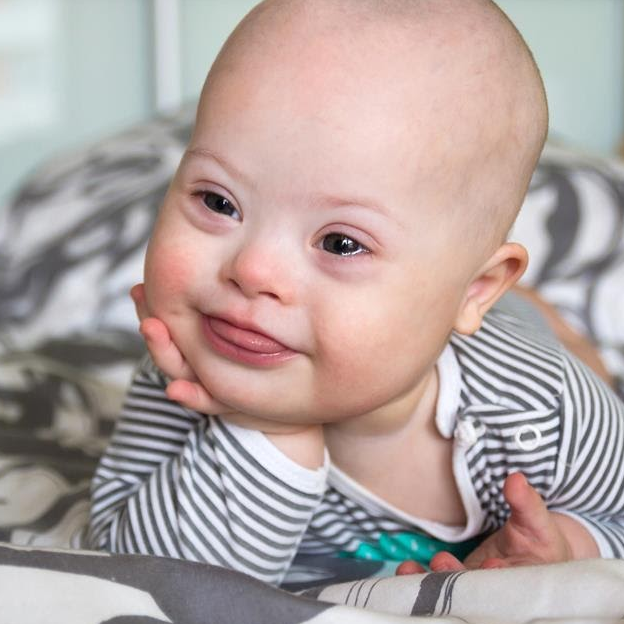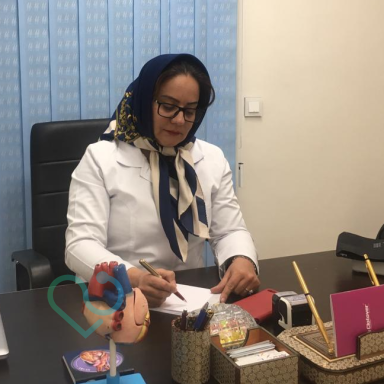Down syndrome is a genetic condition where an individual has an extra chromosome. Chromosomes are small packages of genes in the body that determine how the body of a fetus forms during pregnancy and grows after birth. Normally, a baby is born with 46 chromosomes. However, babies with Down syndrome have an extra copy of one of these chromosomes, specifically chromosome 21. The medical term for having an extra chromosome is "trisomy," which is why Down syndrome is also referred to as Trisomy 21. This extra copy changes how a child develops and can create mental and physical challenges. People with Down syndrome may share similar physical features, but each person has unique abilities. The severity of Down syndrome varies from individual to individual and can cause lifelong intellectual disabilities and developmental delays. These individuals typically have mild to moderate intellectual disabilities and may take longer to speak than other children. Down syndrome is the most common chromosomal disorder and a leading cause of learning disabilities in children. It often leads to other complications such as heart and digestive disorders.
What Causes Down Syndrome?
During reproduction, both parents pass their genes to their children through chromosomes. Each cell in the developing fetus receives 23 pairs of chromosomes (46 in total), half from the mother and half from the father.
In children with Down syndrome, one of the chromosomes does not separate correctly. Instead, the fetus has three copies of chromosome 21, resulting in 47 chromosomes in total. This extra chromosome causes developmental changes in the brain and physical features of the fetus.
Types of Down Syndrome
Down syndrome is generally classified into three types. While all types involve an extra full or partial chromosome, they differ slightly in their characteristics. These three types are:
1- Trisomy 21
Trisomy 21 means that every cell has an extra copy of chromosome 21. This is the most common form of Down syndrome.
2- Mosaic Down Syndrome
Mosaicism occurs when a child is born with an extra chromosome in some cells but not all. Symptoms in individuals with mosaic Down syndrome tend to be milder than those with Trisomy 21.
3- Translocation Down Syndrome
In this type of Down syndrome, children have a total of 46 chromosomes, but one chromosome has an extra piece of chromosome 21 attached.
Will My Child Have Down Syndrome?
Certain factors increase the chances of having a child with Down syndrome. Mothers aged 35 and older and fathers aged 40 and older are at higher risk. Other factors include:
- A family history of Down syndrome
- Genetic translocation issues (incomplete or incorrect transfer of genes)
However, having these risk factors does not guarantee that an individual will have a child with Down syndrome. It merely increases the statistical likelihood.
What Are the Symptoms of Down Syndrome?
Babies with Down syndrome typically have distinctive physical features:
- A flat face
- Small head and ears
- Short neck
- A tongue that tends to stick out of the mouth
- Upward-slanting almond-shaped eyes
- Small white spots on the iris (colored part of the eye)
- Small hands and feet
- Pinky fingers that sometimes curve toward the thumb
- Weak muscle tone or loose joints
- Short stature
A baby with Down syndrome may be born with an average size but grows more slowly than other children. In addition to physical features, developmental delays may include:
- Impulsive behavior
- Short attention span
- Slow learning abilities
Medical complications often associated with Down syndrome include:
- Congenital heart defects
- Hearing loss
- Vision problems
- Cataracts
- Hip problems, such as dislocations
- Leukemia
- Chronic constipation
- Sleep apnea
- Dementia
- Obesity
- Delayed tooth growth, leading to chewing difficulties
- Alzheimer's disease later in life
These individuals are also more prone to infections, such as respiratory, urinary tract, and skin infections.
Screening for Down Syndrome During Pregnancy
Screening for Down syndrome is a routine part of prenatal care and is widely available in many countries. Mothers aged 35 or older and fathers aged 40 or older are often recommended for evaluation, especially if there is a family history of Down syndrome.
First-Trimester Screening
Ultrasound and blood tests can help identify Down syndrome early in the pregnancy. However, these tests may have a higher rate of false positives compared to tests conducted later in pregnancy. If results are abnormal, a doctor may recommend an amniocentesis after the 15th week.
Second-Trimester Screening
Ultrasound and blood tests between weeks 15 and 20 of pregnancy can detect Down syndrome and other brain and spinal defects. If results are abnormal, the fetus may be at risk of congenital defects.
Additional tests a doctor may use to confirm Down syndrome include:
- Amniocentesis: Performed after the 15th week, this test samples amniotic fluid to analyze the fetus's chromosomes.
- Chorionic villus sampling (CVS): Performed between weeks 9 and 14, this test analyzes placenta cells for chromosomal abnormalities but carries a slight risk of miscarriage.
- Percutaneous umbilical blood sampling (PUBS): After the 18th week, this test analyzes blood from the umbilical cord but is only performed when other tests are inconclusive due to its higher risk of miscarriage.
Some mothers opt out of these tests due to the risk of miscarriage, choosing instead to have a child with Down syndrome.
Treatment for Down Syndrome
There is no cure for Down syndrome. However, numerous support programs and educational interventions are available to enhance sensory, social, self-help, motor, language, and cognitive skills. Better understanding and early intervention can significantly improve the quality of life for children and adults with this condition, helping them lead fulfilling lives.
Sources:
healthline.com, cdc.gov, mayoclinic.org












Our Customers' Comments
No comments registered